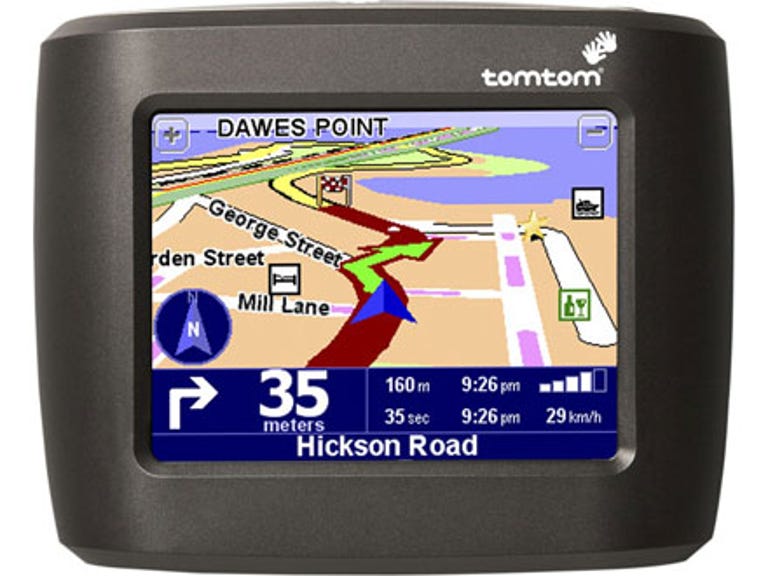 Why You Can Trust CNET
Why You Can Trust CNET TomTom One (1st generation) review: TomTom One
In-car GPS navigation systems are a boon for anybody that spends a lot of time driving from A to B. TomTom's One is designed to deliver directions en route and allow the driver to concentrate on the road.
In-car GPS navigation systems are a boon for anybody that spends a lot of time driving from A to B. TomTom's One is designed to deliver directions en route and allow the driver to concentrate on the road.
The Good
The Bad
The Bottom Line
Design
The colour screen offers a 320 x 240 pixel resolution, and the machine can be set to navigate via voice commands. The device includes a wide range of recorded languages and you are even able to set the gender and accent of the navigating voice so it appears more familiar. An SD card slot on the base of the machine handles the maps, which are available for most major countries.
Features
The packaging includes all you need to get up and running, including a cigarette lighter power adaptor, and a suction cup so you can mount the device to a windscreen. The unit includes a battery, which provides enough charge for two hours' use, and there's even an option to alter the speaker volume with the engine speed, so it gets louder as you travel faster.
What's more, TomTom bundles in capable PC software so can download your route and review your trip. Unfortunately, the packaging doesn't include a printed, bound manual, and while there is a software version on CD-ROM, users can't be expected to print out relevant pages to pack in the car.
Performance
Operation is straightforward: simply enter the street address of where you would like to navigate to and the device will automatically pick an effective route. The TomTom device does a great job of picking the course, and it's possible to override a default selection if there are any shortcuts you'd like to incorporate.
The directions are repeated as you are navigating, and they are constantly updated based upon your position and speed. For example, if you are cruising along an expressway, and you have to take the next off-ramp, the device will say, "turn right in 500m", and then again as you get closer: "turn right in 100m". It makes it relatively difficult to miss a turn and gives you plenty of warning to change lanes.
Unfortunately, if you do happen to ignore the directions given, the GPS unit will not automatically recalculate your route to get you back on course. Instead it will tell you to perform a U-turn at the next available intersection, and then navigate you back to the turn that you initially missed. It's not ideal, particularly if you are in a hurry to get to your destination, as it means that the device doesn't always pick the most effective route. You do however have the ability to recalculate a route while you are driving along, so you can reset your trip instead of backtracking, but it's not easy to do on-the-fly while cruising in traffic.
If you spend a lot of time driving around unfamiliar areas, the TomTom One could save enormous amounts of time and frustration. Granted, the design does have a couple of minor issues, and the lack of a printed manual is a little irksome, but the navigation can't be faulted.
